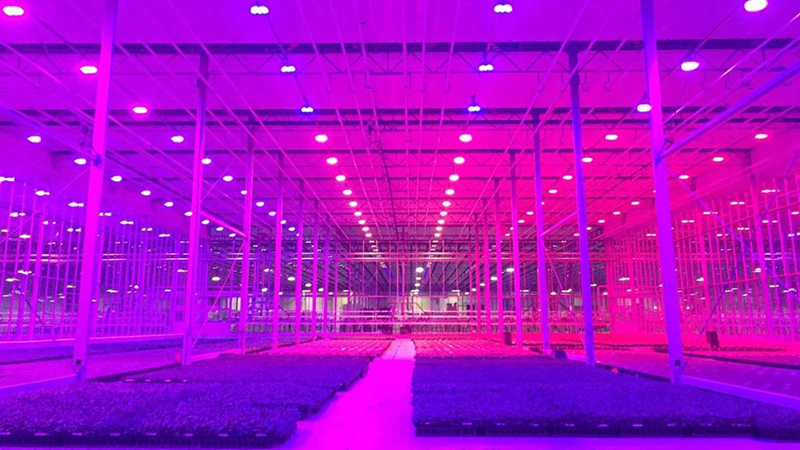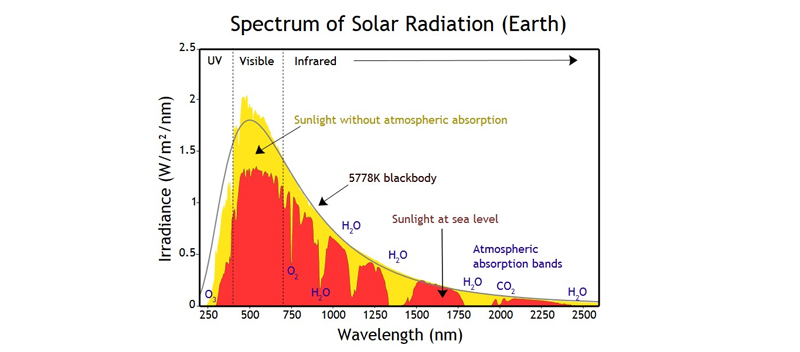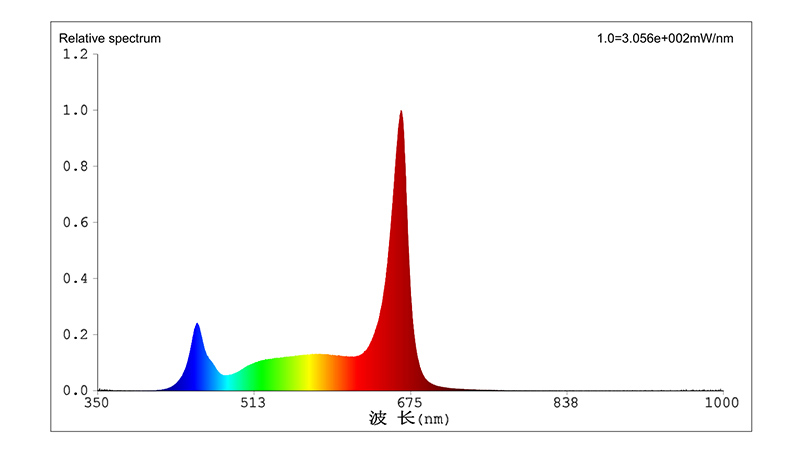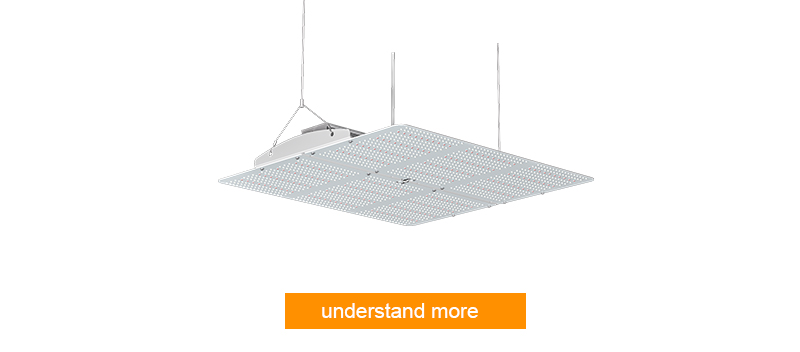
In the LED market, there are many indoor grow lights to choose from, so when you buy Full-spectrum grow lights, figure out which grow lights are suitable for your plants.
When buying LED grow lights, not all LEDs are manufactured the same way. If you want to understand that Plant growth light can provide the true power of the entire lamp, you need to pay attention to the quality and quantity of light generated by the lamp.
This article will help you understand "spectrum" and "PAR" and other ways, their relationship and how to use them to determine how to choose the best Full-spectrum grow lights at the best price for your garden.
These white chips are produced by a phosphor coating method, where the coating is deposited on the LED die. The exact shade or color temperature of the white light produced depends on the dominant wavelength of the blue LED and the composition of the phosphor. The thickness of the phosphor coating will cause the color temperature of the diode to change.
The ideal growth light will be the light that can replicate the solar spectrum while allowing us to adjust the light intensity according to actual needs. This will be the pinnacle of the "full-spectrum".
For our intent and purpose, the radiation spectrum of the sun spreads very uniformly and reaches a peak at a wavelength near the PAR spectrum.


In order to absorb light, plants use some primitive but efficient eyes in our eyes, which we call pigments. The most abundant plant pigment is chlorophyll, which is most effectively used to capture red and blue light. In addition, there are many other pigments, including carotene and lutein, which can absorb other wavelengths of light and transmit it to the photosynthesis process.
It should be noted that green light actually penetrates deeper into the leaf than red light and can drive photosynthesis more effectively. This is because the top layer of the chloroplast containing chlorophyll becomes saturated, and the green and yellow can penetrate deeper into the leaf tissue and reflect to the surroundings until they are absorbed by another chloroplast containing chlorophyll or auxiliary pigments.
First, it is necessary to measure PAR or photosynthetically active radiation. PAR can basically measure the luminescence in the photosynthesis range of 400-700nm. This represents the area of light that the plant uses for photosynthesis or growth. PAR is measured by the amount of micromole light per square meter per second. Although PAR is a key indicator, it can only illustrate part of the story. There are many areas within the PAR range, and plants only absorb a small amount in the green area (560 nm). Therefore, the reading of the spectrum must be combined with the PAR reading to determine how much these micromole molecules are generated from which bandwidth. Spectral readings are obtained by using a device called a spectrometer. Together, these two readings can fully illustrate the effectiveness of the lighting. PAR shows the intensity, and the spectrum shows that the intensity is proportional to the actual wavelength of the plant, not just a waste of energy. The readings produced by these two measurement tools not only show the emitted wavelength or color, but also the absorption value of that particular wavelength. By looking at this graph, you can determine whether the light emits a wavelength suitable for plant photosynthesis, and whether the radiation absorption peak it emits is suitable for robust and high-quality Plant growth light.
Currently, Full-spectrum LED grow lights are expensive. The cost of building a system that relies on these indicators may be higher than the cost of standard HPS or HID settings. However, since LEDs are more efficient than HID lighting, you will save a lot of money in the long run. For example, the average life span of HPS bulbs is about 10,000 hours. Compared to this, LEDs have a lifespan of 50,000 hours, and you will see cost savings over time.
Most HID or CFL lighting setups are bulky. This is not necessarily a bad thing, but if you try to grow in a smaller space, it may become difficult. The full spectrum lamp is relatively small and does not require a ballast or reflector, thus freeing up space in the growth tent or growth chamber.
Light and heat are forever entangled. The temperature of the growth chamber is a key variable, and the growth lamp is one of the biggest factors causing the temperature rise. This is why ventilation in the planting room is so important.
Full-spectrum LED lights actually do not have this problem. In fact, due to the low heat output of such lighting equipment, in fact, some growers have to manually heat the room in the colder months. This means that if you grow in a warm climate, you don't have to worry about overheating the growing space.
The following different types of LED grow lights lighting technologies are still very valuable for quick comparison and comparison.
|
Factor |
Full Spectrum LED |
HPS |
MH |
CMH |
CFL |
|
Cost |
High |
Medium |
Medium |
High |
Low |
|
Heat Output |
Low |
High |
High |
High |
Low |
|
Full Spectrum |
Yes |
No |
No |
Yes |
No |
|
Size |
Small |
Large |
Large |
Large |
Small |
|
Lifespan |
50,000 |
15,000 |
15,000 |
20,000 |
10,000 |
When comparing LED grow lights with HID grow lights, you are actually comparing with three different types of lights: high pressure sodium (HPS) grow lights, metal halide (MH) grow lights and ceramic metal halide (CMH) ) Grow lights.
Generally, HPS will eliminate the full spectrum setting in terms of cost, but will lose heat output and the ability to grow throughout the life of the plant.
|
Full-spectrum LED grow lights |
High Pressure Sodium |
|
• Low heat output • Can grow through entire plant life cycle • Less cumbersome |
• Higher heat output • Optimized for flowering phase • Requires ballast and reflector |
Generally, MH is suitable for plant growth, which has a low cost, but emits a lot of heat and is not suitable for the entire life cycle of plants. However, if you only grow nutritious plants, the effect is good.
|
Full-spectrum LED grow lights |
Metal Halide |
|
• Low heat output • Can grow through entire plant life cycle • Less cumbersome |
• Higher heat output • Optimized for vegetative phase • Requires ballast and reflector |
|
Full-spectrum LED grow lights |
Ceramic Metal Halide |
|
• Similar in cost to a CMH setup • Lower heat output than a CMH • Higher efficiency |
• Requires a special ballast • More expensive than other HID • Can grow through plant life cycle |
Although energy-saving lamps are effective, they are best used in the vegetative growth stage of plants. This is because they usually can not issue sufficiently high light intensity in the right spectrum, the plants can not perform well in the flowering stage.
|
Full-spectrum LED grow lights |
CFLs |
|
• More expensive • Better spectrum of light
|
• Inexpensive • Good for vegetative growth phase
|
The latest PG01 Full-spectrum LED grow lights series is based on patented thermal management technology, with market-leading efficiency and high light output characteristics of each lamp. Therefore, it helps to reduce the number of lamps and the system cost of each lighting area, thereby speeding up the adoption of LED garden lighting.

The PG02 LED grow lights series has an ultra-thin and ultra-light shape, flexible installation options and a variety of spectrum products for you to choose, providing design flexibility for growers who could not install auxiliary lighting equipment before.
If you are not sure which kind of spectrum is the best for the plants you are growing, please contact us and we will provide the best solution for your plants.
Author 2025-06-12
Hishine Group Limited Will Meet Customers In Mexico City.Hishine is thrilled to announce its participation in Expo Eléctrica International 2025, Latin America’s premier trade fair for power and lighti...
Author 2025-05-12
Our recent business trip to Saudi Arabia proved to be a pivotal step in strengthening partnerships and exploring opportunities in the Kingdom’s rapidly growing energy and lighting markets. Below are t...